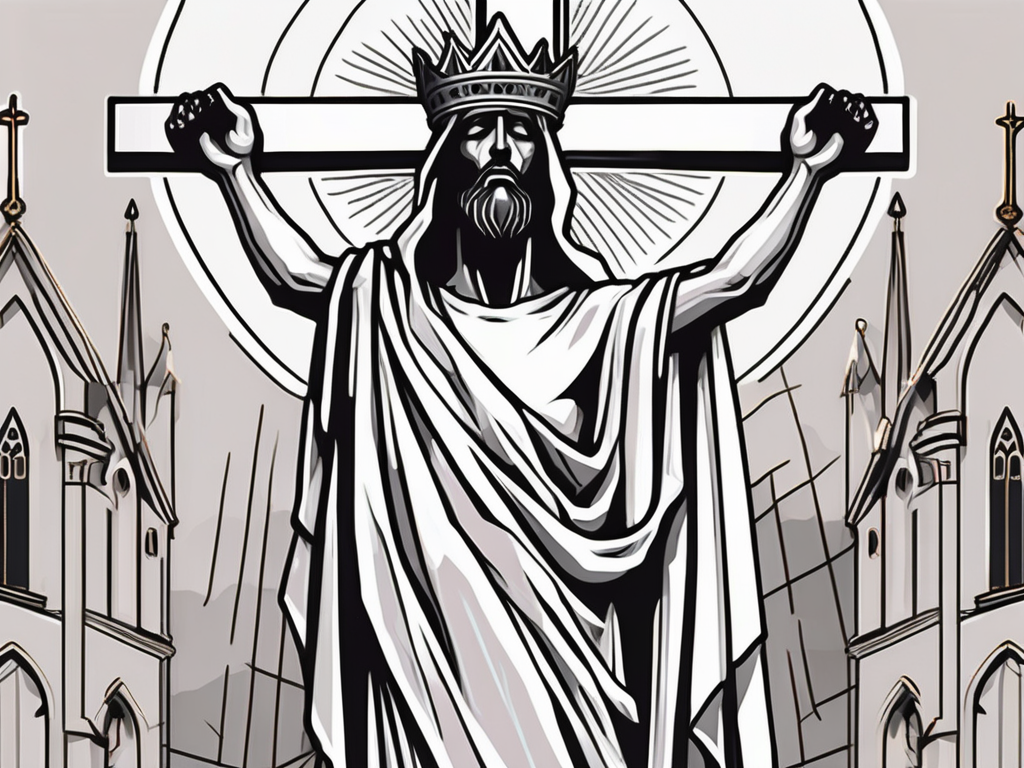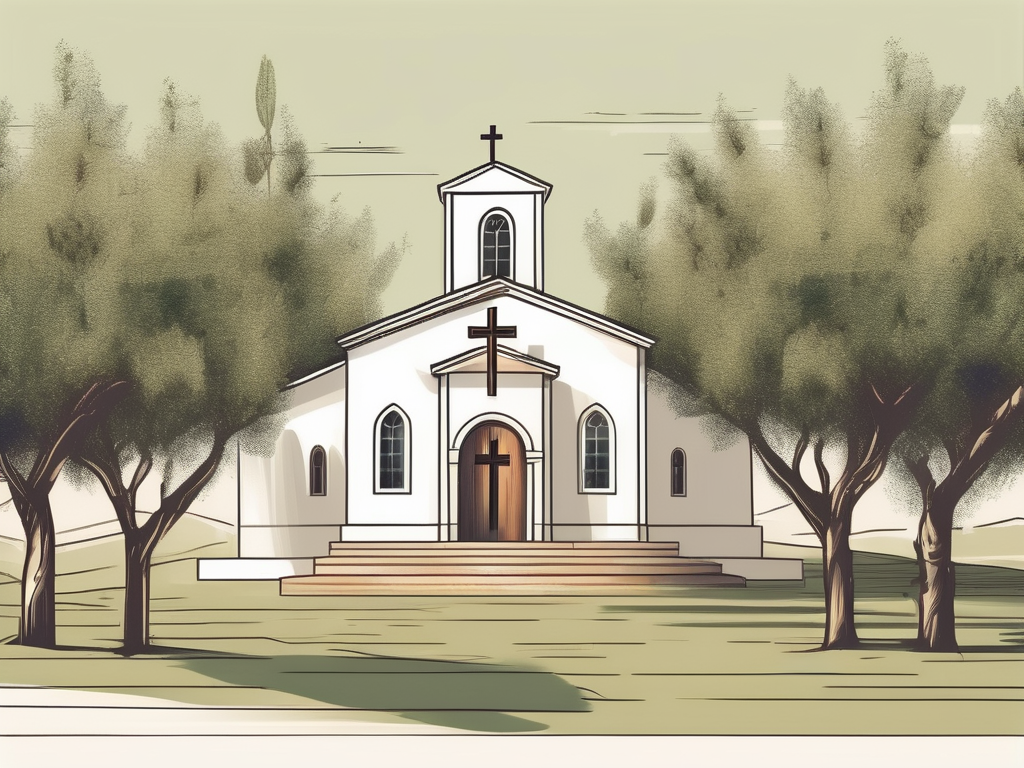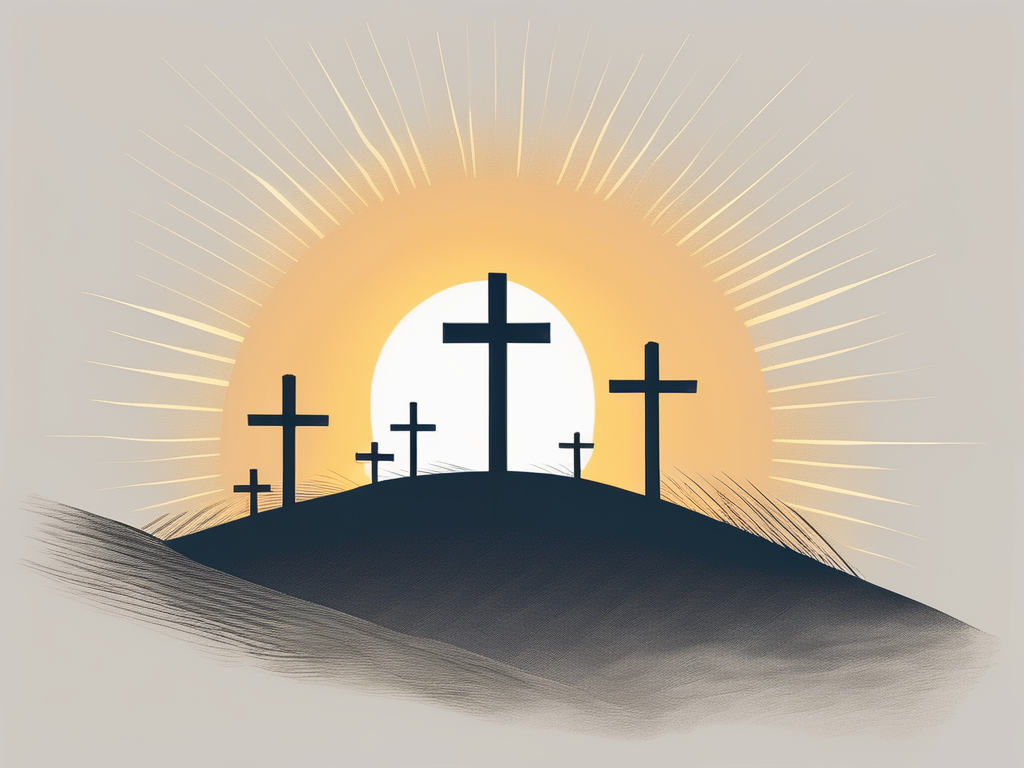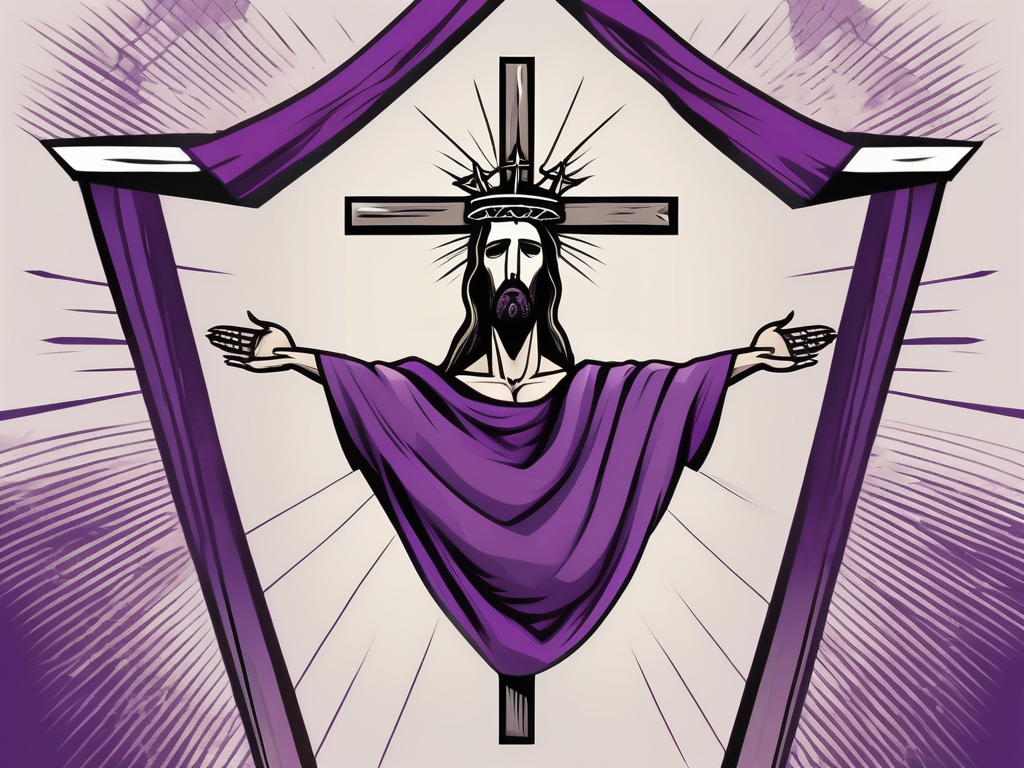The Black Nazarene, a revered figure in Catholicism, holds significant religious and cultural importance in the Philippines. This article delves into the history, symbolism, devotion, miracles, cultural impact, and controversies surrounding this iconic saint.
Understanding the Black Nazarene Saint
The Black Nazarene has a rich historical background that dates back to the Spanish colonial era. Its origin can be traced to a miraculous statue brought to the Philippines in the 17th century. This life-sized wooden sculpture depicts Jesus carrying the cross, hence the name “Nazarene.”
In Catholicism, the Black Nazarene represents Jesus Christ’s suffering and sacrifice during the crucifixion. It symbolizes the fervent belief in redemption and perseverance through trials. Devotees strongly identify with the Black Nazarene’s journey, finding solace and inspiration in its unwavering strength.
The devotion to the Black Nazarene is deeply ingrained in Filipino culture and has become a significant part of the country’s religious landscape. Every year, on January 9th, millions of devotees gather in Manila for the grand procession known as the Traslacion. This religious event is considered one of the largest and most intense religious processions in the world.
The Traslacion is a testament to the unwavering faith of the Filipino people. Devotees from all walks of life come together to participate in the procession, enduring long hours of walking and braving the crowd to get close to the Black Nazarene. Many believe that being in the presence of the statue brings blessings, healing, and protection.
During the Traslacion, the Black Nazarene is carried on a massive and intricately designed carriage called the “andas.” The andas is adorned with flowers, lights, and religious symbols, creating a visually stunning spectacle. It takes a large group of men, known as “mamamasan,” to carry the andas through the streets, while devotees fervently follow, shouting prayers and praises.
Amidst the sea of devotees, there are individuals who perform acts of penance and sacrifice as a form of devotion to the Black Nazarene. Some walk barefoot, carrying heavy crosses or crawling on their knees, while others offer prayers and sacrifices for their intentions. These acts of self-mortification are seen as a way to share in the suffering of Christ and seek spiritual purification.
The devotion to the Black Nazarene extends beyond the Traslacion. Throughout the year, devotees visit the Quiapo Church in Manila, where the statue is permanently housed. The church serves as a sanctuary for those seeking solace, guidance, and miracles. Many devotees attribute their answered prayers and miraculous experiences to the intercession of the Black Nazarene.
Over the centuries, the Black Nazarene has become a unifying symbol for the Filipino people. It transcends social classes, bringing together people from different backgrounds and walks of life. The devotion to the Black Nazarene is a testament to the resilience and faith of the Filipino people, serving as a source of inspiration and strength in times of hardship.
The Devotion to the Black Nazarene
Devotion to the Black Nazarene is deeply rooted in faith and belief. It draws millions of devotees, both from within the Philippines and abroad, who participate in the annual Traslacion procession in Manila. This religious event showcases an extraordinary display of devotion, unity, and sacrifice.
As the sun rises over the city of Manila, the streets become a sea of devotees clad in maroon and yellow, eagerly awaiting the start of the Traslacion procession. The air is thick with anticipation and excitement, as the devotees prepare themselves for the long journey ahead. Some have traveled for days, braving the elements and enduring physical discomfort, all in the name of their unwavering faith.
During the procession, devotees endure long hours of walking barefoot, despite the scorching heat or pouring rain, in an act of penance and gratitude. The streets echo with the rhythmic sound of their footsteps, a testament to their unwavering determination and devotion. Each step taken is a symbol of their willingness to bear the burdens of life, just as Jesus did.
Along the route, devotees fervently chant prayers and sing hymns, creating an atmosphere of spiritual fervor. The sound of their collective voices fills the air, rising above the noise of the bustling city. It is a powerful reminder of the unity and solidarity that exists among the devotees, as they come together to honor and venerate the Black Nazarene.
Touching or being near the Black Nazarene statue is believed to bring blessings and miracles, prompting individuals to risk being elbowed or jostled in the intense crowds. The statue, with its dark complexion and sorrowful expression, is seen as a symbol of hope and redemption. It is believed that by touching the statue, devotees can receive healing, guidance, and protection.
Rituals and practices surrounding the Black Nazarene include the lighting of candles, recitation of prayers, and offering of flowers or personal petitions. These acts of devotion demonstrate the unwavering faith and the desire for intercession and divine intervention. The flickering candles illuminate the faces of the devotees, casting a warm glow that symbolizes their spiritual connection to the Black Nazarene.
Amidst the sea of devotees, there are stories of personal struggles and triumphs. Each individual has their own reasons for participating in the Traslacion procession. Some seek solace and healing from physical ailments, while others offer prayers of gratitude for answered prayers. The Black Nazarene serves as a beacon of hope, offering comfort and strength to those who are in need.
As the Traslacion procession comes to an end, the devotees disperse, carrying with them a renewed sense of faith and devotion. They return to their homes, their hearts filled with gratitude and their spirits uplifted. The devotion to the Black Nazarene is not just a religious tradition, but a testament to the enduring power of faith and the human spirit.
The Miracles Attributed to the Black Nazarene
Countless miracles have been attributed to the Black Nazarene, ranging from physical healings to personal transformations. Documented accounts of these miracles underline the profound impact the Black Nazarene has on individuals and communities.
One remarkable miracle that stands out is the healing of a young girl named Maria. Maria had been suffering from a rare and incurable disease that left her bedridden for years. Her family, desperate for a miracle, decided to bring her to the annual procession of the Black Nazarene in Manila.
As the procession passed by, Maria’s family fervently prayed for her healing. Suddenly, Maria felt a warm sensation spreading throughout her body. She stood up, completely healed, much to the astonishment of those around her. This miraculous healing not only transformed Maria’s life but also inspired hope in the hearts of countless others who witnessed the event.
Another awe-inspiring miracle attributed to the Black Nazarene is the story of Eduardo, a former drug addict who had lost all hope for a better life. Eduardo had hit rock bottom, with his addiction tearing his family apart and leaving him homeless on the streets of Manila.
One day, Eduardo stumbled upon a group of devotees praying to the Black Nazarene. Intrigued, he decided to join them. As he fervently prayed for guidance and strength to overcome his addiction, Eduardo felt a profound sense of peace washing over him.
From that moment on, Eduardo’s life took a dramatic turn. He found the strength to seek help and undergo rehabilitation. With the support of his newfound faith in the Black Nazarene, Eduardo successfully overcame his addiction and rebuilt his life. Today, he is a living testament to the transformative power of the Black Nazarene’s intercession.
These miracles are often interpreted through a theological lens, emphasizing the power of faith and divine intervention. The Black Nazarene’s supernatural intervention in the lives of devotees reinforces their belief in the saint’s divine presence and ability to bestow blessings.
Furthermore, the miracles attributed to the Black Nazarene extend beyond physical healings and personal transformations. There are accounts of individuals who have experienced financial breakthroughs after seeking the intercession of the Black Nazarene. These stories speak to the belief that the Black Nazarene not only cares for the spiritual well-being of its devotees but also provides for their material needs.
Additionally, the Black Nazarene is believed to protect its devotees from harm and danger. There are numerous accounts of devotees narrowly escaping accidents or finding themselves in situations where their lives were at risk, only to be saved by what they believe to be the miraculous intervention of the Black Nazarene.
It is these extraordinary stories of miracles and divine intervention that continue to draw millions of devotees to the annual procession of the Black Nazarene. The faith and devotion of these individuals are deeply rooted in their personal experiences of the Black Nazarene’s miraculous power, which they believe is a testament to the saint’s divine nature.
The Cultural Impact of the Black Nazarene
The Black Nazarene’s influence extends beyond the realm of religion. It has become an integral part of Filipino society and culture, encompassing various aspects of people’s lives.
In popular culture, the Black Nazarene has inspired numerous works of art, literature, and music. These creative expressions serve as vehicles for people to explore and communicate their deep spiritual connection with the saint. The Black Nazarene’s image can also be found in homes, workplaces, and public spaces, serving as a source of inspiration and protection for many Filipinos.
Criticisms and Controversies Surrounding the Black Nazarene
The Black Nazarene’s popularity and the Traslacion procession have not been exempt from criticisms and controversies. Within the Catholic Church, debates arise regarding the excessive focus on the statue and whether it diverts attention from core Christian teachings.
Societal criticisms often revolve around the massive crowd size during the Traslacion, potential safety hazards, and questions concerning superstition versus genuine faith. These criticisms prompt discussions about the balance between religious expression and practical considerations.
Responses to these criticisms vary, with proponents highlighting the transformative power of devotion, while others advocate for changes to ensure a safer and more inclusive experience for all participants.
The Significance Explored
In conclusion, the Black Nazarene holds immense significance as both a religious figure and a cultural symbol. The devotion and miracles associated with the Black Nazarene reflect the deep faith and unwavering belief of the Filipino people.
While controversies and criticisms may arise, the Black Nazarene continues to inspire and connect individuals through its enduring presence and the hope it represents. The devotion to the Black Nazarene remains an integral part of Filipino Catholicism and serves as a testament to the power of faith and the human spirit.












